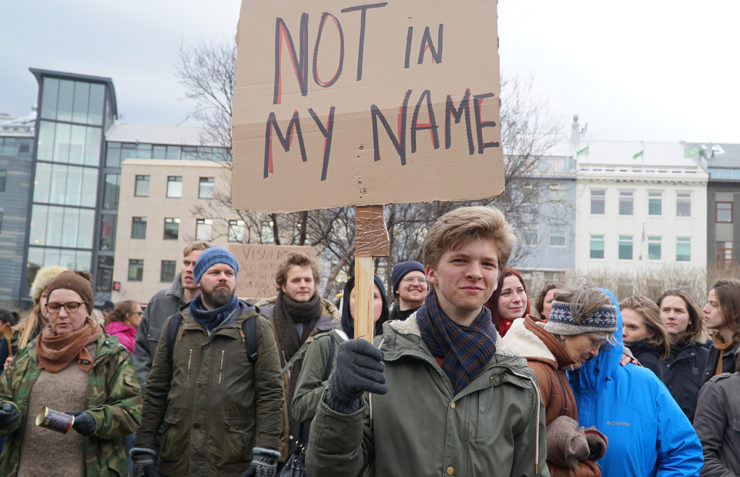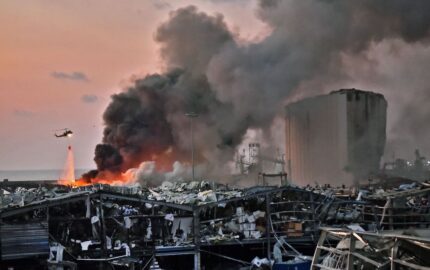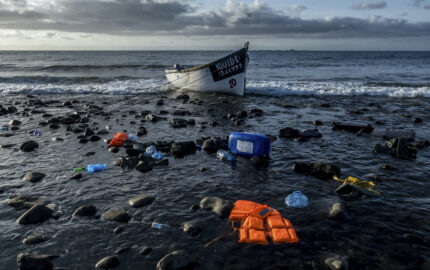The email that landed in my inbox some 10 months ago didn’t reveal much. “New Project,” the subject simply stated. Knowing the sender, Marina Walker, Deputy Director of the International Consortium of Investigative Journalists (ICIJ), I immediately understood something big was happening. Soon after, on a Skype call from Washington D.C., I was introduced to what the world would later know as the “Panama Papers.”
Almost 10 months later, on Sunday, April 3 at 2pm EST, readers across the globe learned a new name: Mossack Fonseca. The previously unfamiliar Panama-based law firm was transformed irrevocably as the Internet flooded with information about it. Reporters from all corners of the globe, in more than two dozen languages, revealed the firm’s dealings with the world's richest people. Findings about Russian President Vladimir Putin, Chinese president President Xi Jinping, Iceland’s Prime Minister Sigmundur Davíð Gunnlaugsson and others, forced governments and policy-makers to react.
But how did ICIJ manage to do it?
ICIJ, a D.C.-based nonprofit, is the leading force today when it comes to cross-border investigations. It has a network of more than 190 investigative journalists in more than 65 countries. These journalists promote the work and investigations back at their home publications.
I am one of the two Israeli members in the organization and worked on the Panama Papers for Tel Aviv-based Haaretz newspaper. This was the third ICIJ project I took part in, with the previous being “Swiss Leaks” and “Luxembourg Leaks.”
At the end of June 2015, on a steamy D.C. summer day, representatives from over a dozen media organizations met to discuss the “New Project.” The conversation took place in English. We heard from reporters at Süddeutsche Zeitung, the German newspaper that received the Panama files from its own source. They shared it with ICIJ.
During that first meeting, we were presented with various aspects of the project and learned what could be possible to find in that complicated treasure of a leak. We discussed the timing of the publication, considered names for the project, and more. Some decisions were taken at that time, and some later that year, at follow-up meetings in different locations.
A key factor—and an incredible challenge—was how to conduct searches in such a massive amount of information: 2.6 terabytes of data reaching back 40 years. ICIJ put tremendous effort in making such explorations as easy as possible, even for the less technologically savvy among the reporters.
In the following months, the number of journalists participating in the project constantly grew. Partners and vetted colleagues were granted access to an internal secure site that enabled a Google-style search within all the files.
Optical Character Recognition (OCR) enabled the textual search of images and files that typically are non-searchable, such as PDFs. New search and download possibilities were added over time, enabling search by the date a particular file was created, its size, form, creator, sender, etc. Reporters could bookmark documents, download full directories of companies and review their own search history. In addition, a visual search option was developed, enabling journalists to easily recognize and see connections among companies, clients, and shareholders in the data.
ICIJ also developed a tool that enabled journalists to discover beneficial owners from scratch or review names identified by others. After three journalists identified the same beneficial owner in the same document, the name was added to the “beneficial owners” list. Eventually ICIJ managed to construct a list of shareholders, directors, beneficial owners and clients (those who listed the companies) for each country.
Not less significant was a classified forum platform that enabled journalists, sometimes sitting thousands of miles away from each other, to communicate, share leads, findings, and stories. It was sort of our own private Facebook: Each reporter had a personal profile. An internal messenger option was built. Groups and forums were created to discuss dozens of topics under investigation. Files of all sorts were uploaded and shared on this platform, which became the center of the universe for many of the data-deep journalists involved.
The two-factor-authentication-protected platform was really the heart of the operation, and probably the most inspiring aspect of it. By publication date, more than 370 journalists in more than 80 countries at more than 100 media organizations participated in the project. With such an enormous leak, including many participants and exceptional findings, the level of trust must be at its highest.
In this era of information and competition, such confidence in fellow journalists is not an obvious thing. The fact that throughout the year of investigation, the project stayed behind the curtain is no less than incredible. These days the effects of such intense cooperation and trust are evident on front pages of papers around the world.
Almost 10 months later, on Sunday, April 3 at 2pm EST, readers across the globe learned a new name: Mossack Fonseca. The previously unfamiliar Panama-based law firm was transformed irrevocably as the Internet flooded with information about it. Reporters from all corners of the globe, in more than two dozen languages, revealed the firm’s dealings with the world's richest people. Findings about Russian President Vladimir Putin, Chinese president President Xi Jinping, Iceland’s Prime Minister Sigmundur Davíð Gunnlaugsson and others, forced governments and policy-makers to react.
But how did ICIJ manage to do it?
ICIJ, a D.C.-based nonprofit, is the leading force today when it comes to cross-border investigations. It has a network of more than 190 investigative journalists in more than 65 countries. These journalists promote the work and investigations back at their home publications.
I am one of the two Israeli members in the organization and worked on the Panama Papers for Tel Aviv-based Haaretz newspaper. This was the third ICIJ project I took part in, with the previous being “Swiss Leaks” and “Luxembourg Leaks.”
At the end of June 2015, on a steamy D.C. summer day, representatives from over a dozen media organizations met to discuss the “New Project.” The conversation took place in English. We heard from reporters at Süddeutsche Zeitung, the German newspaper that received the Panama files from its own source. They shared it with ICIJ.
During that first meeting, we were presented with various aspects of the project and learned what could be possible to find in that complicated treasure of a leak. We discussed the timing of the publication, considered names for the project, and more. Some decisions were taken at that time, and some later that year, at follow-up meetings in different locations.
A key factor—and an incredible challenge—was how to conduct searches in such a massive amount of information: 2.6 terabytes of data reaching back 40 years. ICIJ put tremendous effort in making such explorations as easy as possible, even for the less technologically savvy among the reporters.
In the following months, the number of journalists participating in the project constantly grew. Partners and vetted colleagues were granted access to an internal secure site that enabled a Google-style search within all the files.
Optical Character Recognition (OCR) enabled the textual search of images and files that typically are non-searchable, such as PDFs. New search and download possibilities were added over time, enabling search by the date a particular file was created, its size, form, creator, sender, etc. Reporters could bookmark documents, download full directories of companies and review their own search history. In addition, a visual search option was developed, enabling journalists to easily recognize and see connections among companies, clients, and shareholders in the data.
ICIJ also developed a tool that enabled journalists to discover beneficial owners from scratch or review names identified by others. After three journalists identified the same beneficial owner in the same document, the name was added to the “beneficial owners” list. Eventually ICIJ managed to construct a list of shareholders, directors, beneficial owners and clients (those who listed the companies) for each country.
Not less significant was a classified forum platform that enabled journalists, sometimes sitting thousands of miles away from each other, to communicate, share leads, findings, and stories. It was sort of our own private Facebook: Each reporter had a personal profile. An internal messenger option was built. Groups and forums were created to discuss dozens of topics under investigation. Files of all sorts were uploaded and shared on this platform, which became the center of the universe for many of the data-deep journalists involved.
The two-factor-authentication-protected platform was really the heart of the operation, and probably the most inspiring aspect of it. By publication date, more than 370 journalists in more than 80 countries at more than 100 media organizations participated in the project. With such an enormous leak, including many participants and exceptional findings, the level of trust must be at its highest.
In this era of information and competition, such confidence in fellow journalists is not an obvious thing. The fact that throughout the year of investigation, the project stayed behind the curtain is no less than incredible. These days the effects of such intense cooperation and trust are evident on front pages of papers around the world.



